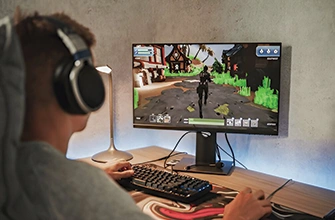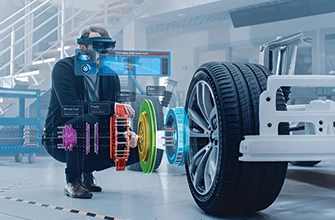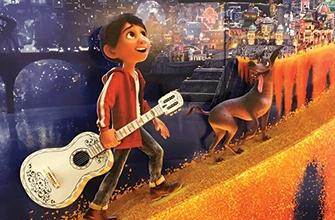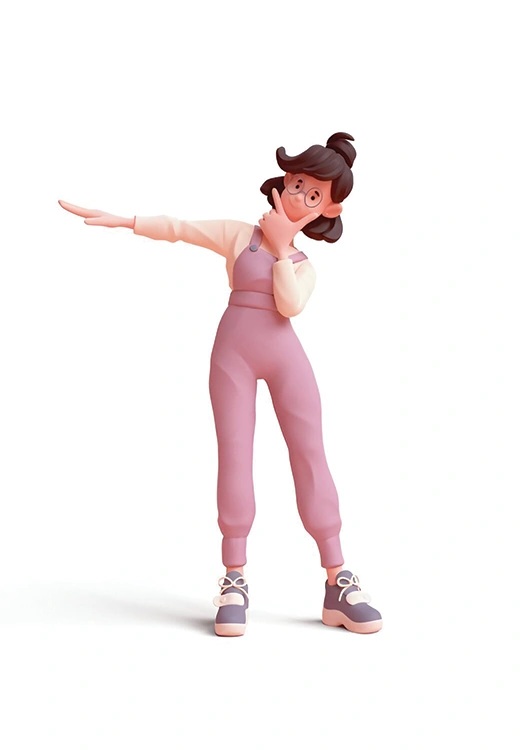A Guide to 3D Video Editing
3D video editing presents a unique opportunity to add an extra layer of engagement and visual interest to your projects. Whether you're creating a mind-blowing sci-fi scene or showcasing a product, 3D video editing
3D low-poly modeling stands out as a technique that combines efficiency with aesthetic appeal. This approach to 3D modeling is essential for creating assets that are both visually compelling and optimized for performance, particularly in real-time applications such as video games and virtual reality.

In the gaming industry, 3D low-poly models are frequently used for character design, environment creation, and asset management. Their efficiency ensures that games run smoothly on various hardware configurations.

For VR and AR applications, low-poly models help maintain performance and responsiveness. The reduced complexity of these models allows for immersive experiences without compromising frame rates.

Mobile platforms benefit from the reduced computational load of low-poly models, making them an excellent choice for applications that require quick rendering and smooth interaction.

In animation, low-poly models can be used for background elements and secondary characters, allowing for more detailed focus on primary assets without sacrificing performance.
Engaging with a professional 3D low-poly modeling service ensures that assets are created with both quality and performance in mind. Experts in this field have the skills and experience to produce models that meet industry standards while achieving the desired visual impact.

Professional services bring specialized skills and experience, ensuring high-quality low-poly models that meet industry standards and project requirements. Their expertise guarantees precision in modeling, texturing, and optimization.

With a focus on best practices and advanced techniques, professional services streamline the modeling process, leading to faster turnaround times and reduced production costs while maintaining quality.

By leveraging professional expertise, clients can achieve superior visual quality and performance. Professionals utilize advanced tools and methodologies to produce models that not only look great but also perform efficiently across various platforms.

We empower businesses of all sizes to handle big data, create impactful content, and dominate the digital landscape.
Here are the properties that we gain with our hard-working




3D low-poly modeling involves creating 3D models with a limited number of polygons. Unlike high-poly models, which use a dense mesh of polygons to achieve fine details, low-poly models utilize a simplified mesh to deliver a streamlined appearance.
The process begins with conceptualizing the design and planning the model’s structure. This involves creating rough sketches or reference images to define the overall shape, style, and functionality of the low-poly model.
Using 3D modeling software, artists start by creating the basic geometric shapes that form the model. This stage involves constructing a simplified mesh with a low polygon count, focusing on the model’s fundamental structure.
The model is then refined by reducing the number of polygons while preserving essential details. Optimization techniques are applied to streamline the mesh and ensure that the model performs efficiently without unnecessary complexity.
Once the model is complete, UV mapping is used to apply textures to the surface. This process involves unwrapping the model’s mesh into a 2D plane and mapping textures accurately to give the model its final appearance.
For animated projects, the low-poly model is rigged with a skeletal structure to facilitate movement. This involves creating bones and joints that allow the model to be animated smoothly while maintaining its low-poly characteristics.
The model is tested in its intended environment to ensure it performs well and meets visual standards. Any issues are addressed, and final adjustments are made to optimize the model further.

“The 3D low-poly models delivered were exactly what we needed. The efficiency in performance and the unique stylized look truly enhanced our game. The team’s attention to detail and adherence to our specifications made the whole process smooth and successful.”
“Working with this team was a fantastic experience. Their professional approach and technical expertise resulted in high-quality low-poly models that integrated seamlessly into our VR project. The support they provided throughout was invaluable.”
“We were impressed with the innovative solutions and quick turnaround time. The low-poly models were perfectly optimized for our mobile app, enhancing performance and user experience. Highly recommend their services!”
“The team did an excellent job with our animation project. The low-poly models not only looked great but also performed flawlessly. Their clear communication and collaborative approach made the project enjoyable and efficient.”
3D low-poly modeling involves creating 3D models with a limited number of polygons. This technique simplifies the mesh to reduce computational demands, making the models ideal for real-time applications like video games and VR.
Low-poly modeling is preferred for applications where performance and efficiency are crucial. It reduces the computational load and improves rendering speeds, making it suitable for real-time environments where high frame rates are essential.
The primary benefits include improved performance, faster render times, reduced resource usage, and a distinct stylized look that can enhance visual appeal in various applications.
Texturing involves applying surface details to the model through UV mapping. Despite the reduced polygon count, textures can add depth and detail, enhancing the visual quality of low-poly models.
Yes, low-poly models can be rigged and animated. The process involves adding a skeletal structure to the model, which allows for smooth and dynamic animations even with a lower polygon count.
While low-poly models are ideal for real-time applications like games and VR, they may not be suitable for projects that require high levels of detail and realism. The choice depends on the specific needs and constraints of the project.
You can contact with us for any queries and any others.
3D video editing presents a unique opportunity to add an extra layer of engagement and visual interest to your projects. Whether you're creating a mind-blowing sci-fi scene or showcasing a product, 3D video editing
3D animated explainer videos have the power to transform complex ideas into engaging and memorable experiences. By following these guidelines and learning from successful case studies, you can create videos that resonate with your
At the forefront of this revolution is 3D printing, a process that is gaining traction in the medical field. One of its most promising applications lies in creating customized anatomic models for patient-specific care.
3D printing, a revolutionary technology, has emerged as a powerful tool for transforming digital designs into tangible objects. By laying materials, this process bridges the gap between the virtual and physical realms, offering unprecedented
3D modeling has become an indispensable tool in various industries. From video game development and product design to architecture and animation, the ability to create detailed 3D models is paramount.
Free 3D modeling software has revolutionized the creative landscape. With a plethora of options available, users can now explore their artistic potential without the financial constraints associated with commercial software.
Address: Dhap, Rangpur, Bangladesh.
Email: info@bittoexabyte.com
Open: 24/7